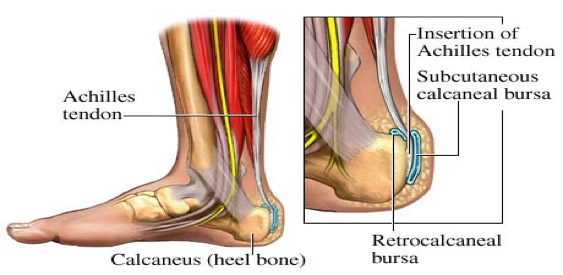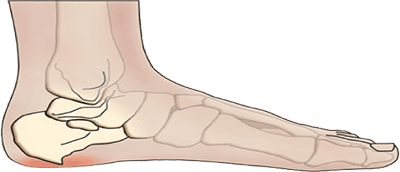Achilles Tendonitis is the inflammation of the Achilles Tendon. The Achilles Tendon is the longest tendon in the body, connecting our calf muscles (gastrocnemius and soleus) to the heel bone (calcaneus).

(From: http://www.northshoresportspodiatry.com.au/conditions-we-treat/achilles-tendon-bursitis/)
Signs and Symptoms of Achilles Tendonitis

- Pain experienced just above the back of the heel when walking
- Swelling and inflammation occur where pain is felt
- Often experience tight calf muscles
- Tender when touching the tendon
- Thickening of the tendon
- A spur may develop on the back of the heel if repetitive stress and strain on the tendon persists over a long period of time
- In extreme cases detachment (breakage) may occur while walking if the condition is left untreated and stress and strain continue to be exerted on the Achilles
Causes of Achilles Tendonitis
- Persistent stress and strain
- Biomechanical problems of the foot – excessive pronation (inward rolling) or excessive supination (outward rolling)
- Shortened Achilles tendon
- Over activity of the foot, especially excessive running
- Age–the tendon becomes less resilient, more susceptible to stress and strain
Treatments for Achilles Tendonitis
- Remedial massage – acupressure work on both the gastrocnemius and soleus muscles (collectively known as our ‘calf muscles’). Be cautious, though, not to use excessive stretching treatment to avoid further aggravating any inflammation.
- Acupuncture – reduces pain and inflammation. It has been scientifically proven that acupuncture helps release both natural endorphins, to relieve pain, and natural anti-inflammatory agents, to fight inflammation.
- Cortisone injections can give temporary relief. However, avoid extended cortisone treatment as damage to the tendon, including breakage (detachment), could occur.
- Orthotics-the root cause for most people with Achilles Tendonitis is over pronation (excessive inward rolling) of the foot. Over-the-counter orthotic footwear can help treat the great majority of people suffering this condition by providing sufficient foot arch support. In contrast, only a small percentage of people (approximately 5%) with a supinated foot structure (excessively high arched) should see a podiatrist for further assessment.
